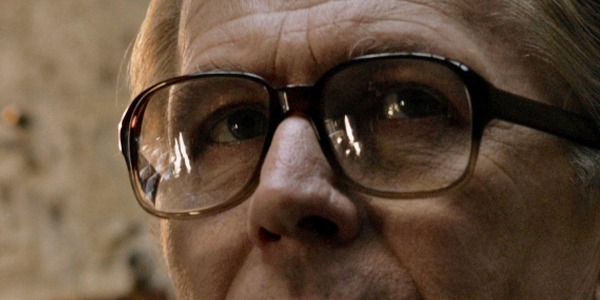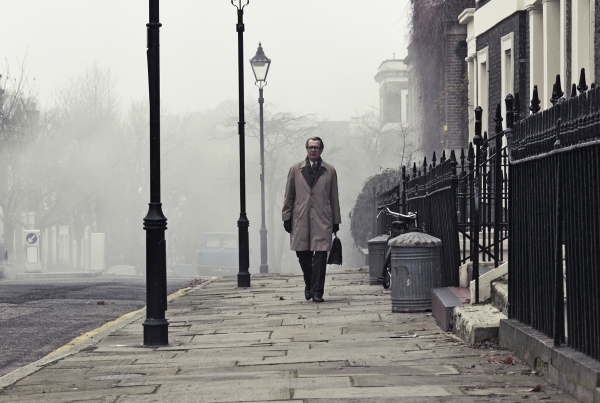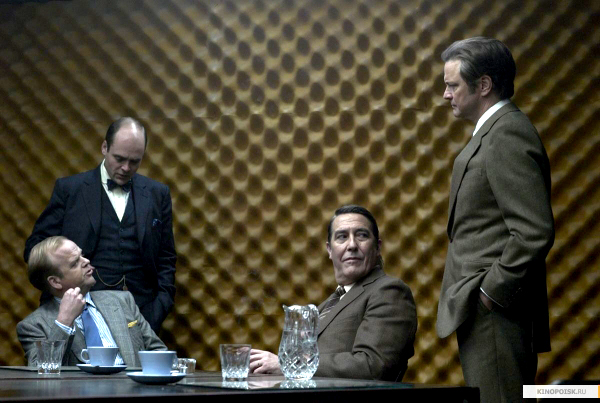
Rich man, Poor man, Oldman, Thief.

You’re going to have to work a little harder than normal to enjoy this film. You’ll have to become George Smiley on the hunt for the mole inside MI5; you need to pay close attention and ask questions. You’re going to have to work the muscles in your brain and not the ones in your face. In that way you’ll become Gary Oldman.
Quite rightly, unfamiliarity with the source text should not cripple the adaptation. Condensing a great number of words into a short number of minutes forces the tough questions: What do we discard? Who do we omit? Is that really necessary? Well, what if we shuffle this end bit to the beginning and rewrite the scene entirely?
So instead of Jim Prideaux’s botched espionage mission occurring in the forests amid machine gun clatter, the film opens with Jim strolling into a boulevard amid the clatter of coffee cups and plates. What was explosive in the book now simmers on the screen as Jim slowly realises that every single person, even the mother breastfeeding her child, is watching him. He’s completely alone. It’s a trap.
And it’s a fantastic change from the novel which sets the tone of slow burning distrust. The men all happen to be spies but this is no spy film. Now retired from “the Circus” George Smiley, played by Gary Oldman’s passport photo, is called in to lead a covert investigation in the already top secret MI5. He must find the liar in an organisation of lies without alerting the mole further. That means careful study with no sudden movements, Gary Oldman’s face.



Sadly, Tinker, Tailor assumes some prior knowledge and a little too much intelligence. I’ve read the book and watched the TV series and did both when I was nine years old meaning by now I’d basically forgotten the whole thing. Though I do remember Sir Alec Guiness’ performance as George Smiley. What a smile. Gary Oldman smiles like a dour-faced, jelly baby.
Even then I struggled. I struggled with slightly too many characters which blur because of their subtle moves. I struggled to identify the valuable information in the fairly sparse offering. I struggled because the film does not once spell it out. There’s no exposition or handy flashback to prompt you along. You’re completely alone.
I actually remembered the identity of the mole part way through. Still, knowing what to look for, I didn’t see any memorable building of evidence to uncover the mole, let alone any of the other suspects. Unless you actively question and pull together what you see, Tinker, Tailor, Soldier, Spy will make you feel stupid. And it’s not the audience’s fault.
In the earlier Tinker, Tailor’s it was in the gaps between chapters and episodes where the audience could question and meditate on the facts. Obviously I couldn’t do it during the film because there are no gaps and I was too busy watching the film, trying to figure out in which scene had Gary Oldman succumbed to rigor mortis.



While the lacklustre and dismissive reveal of the mole suggests the film is not a “who-dunnit?” the fact we follow George’s investigation so closely suggests it must be. There’s no emotion to Smiley’s investigation as if he doesn’t really care. If he doesn’t care, why should I?
This is why I was so let down by Oldman’s performance. Of all the characters this film’s George Smiley is the worst for being secretive. His eternal poker face betrays him and my enjoyment of him as the protagonist. When he finally reveals his cards, the ones I never really got a good look at, I want to tell him, “Nice for you, George” and then leave the table never having invested anything worthwhile anyway.
Outside of Oldman being a British actor in a British film adapted from a British novel about British Secret Intelligence I see nothing remarkable in his award-nominated performance other than being an excellent reference set for future artists at Madame Tussauds.






